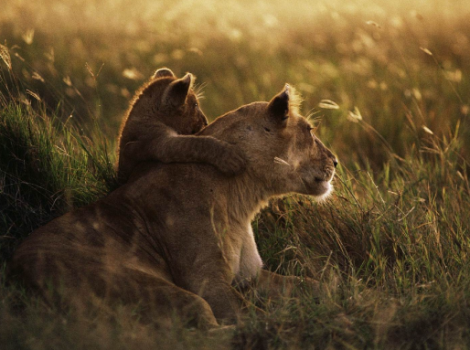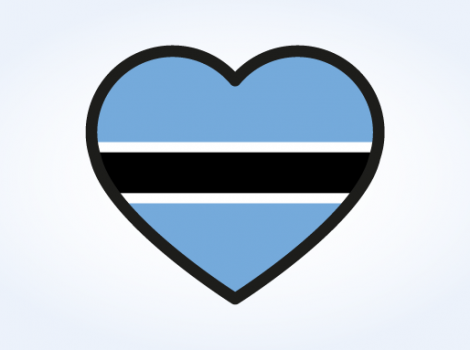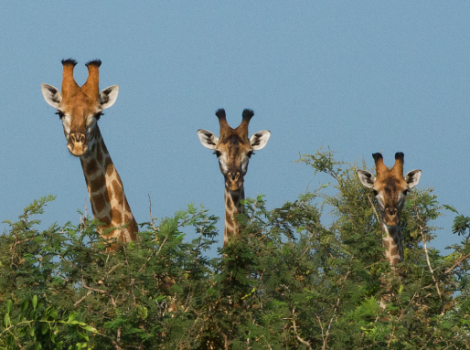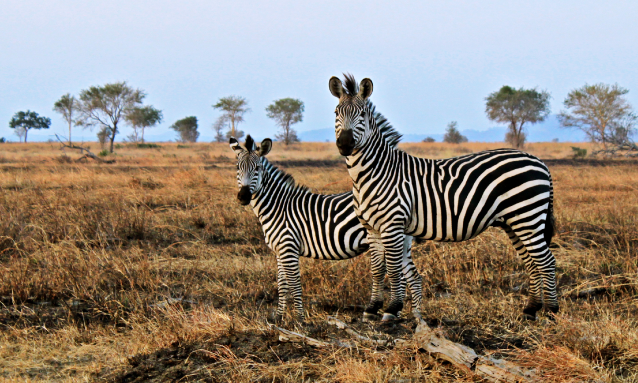
I had not heard the call. No one near me had—not the South African behind me, nor the Swedish woman to his left. Not even the Vancouverites, who’d finally silenced the shutters on the shiny new Canons they’d traveled 9,875 miles to test out in Botswana, and who had proven to be the couple in our mud-smacked 4WD who maybe, maybe, could spot something before OB, our guide, had a chance (they got high praise for spying a rare red-billed Quelea 30 minutes earlier which sent those shutters aflutter). With two days of game drives already behind us, the five of us now understood when OB sensed something. Raised in a village on the fringe of the Okavango, the 49-million acre river delta in northern Botswana that we now drove through, he had been a guide with Wilderness Safaris for eight years, and could read the bush more sharply than a patient with binoculars could an eye chart.
We slowed our conversation as OB slowed the jeep. Then we sat, alert and silent. Around us, the early evening sky swirled in pinks and oranges as the sun lowered; the animals were waking up.
“There it is,” OB’s whisper was firm enough to reach the jeep’s third row, “hear it?”
A distinct, distressed chirp sliced our quiet.
OB pointed to a tree where a small cisticola puffed and puffed, its brown-feathered chest tight like a balloon. His hand directed our eyes to a group of impala in the distance on our right, whose Bambi eyes and ears were cocked and alert, staring at that songbird whose calls they knew, as OB did, to be warning.
“Lions are near,” he said. He turned to us and grinned.
The pride eventually appeared, and the hunt we went on to observe became the story to beat at dinner that night with the other guests, back at Mombo Camp (pictured below). And for weeks afterwards, I found myself thinking about how the bush told us those lions were near—or at least, told OB. It’s the kind of fine-tuned interaction that’s more likely to occur in Botswana than other safari spots in Africa. And it’s largely thanks to the efforts of the government, whose tourism model is unique to the region: fewer people, but high spenders, designed to steadily grow the economy and—this is key—have as little impact on the environment as possible.
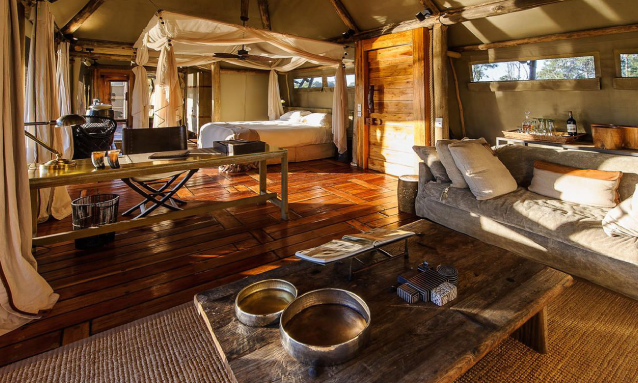
For the average traveler, that means it’ll be (or at least feel like) just you and the wide-open delta, as lush and untethered as the gods intended. To give perspective, you’ll see lions in Kenya’s Maasai Mara or in South Africa’s Kruger, too. But your cue will probably be the stationary gang of jeeps who spotted them first, which feels about as natural as those air-conditioned beaches you get in Dubai. (On our aforementioned viewing, the South African behind me mentioned that he was once in one of 57 jeeps watching a pride of lions up in Tanzania’s Serengeti.)
The policy’s mechanics are simple: each concession is allowed a certain amount of beds, which varies depending on government decree, but always hovers extremely low; in Qorokwe, a 64,000-acre private concession in the central Okavango, just ten are allowed (you’ll find them at the five-month-old Qorokwe camp, from Wilderness Safaris – pictured below). It leads to more intimate game viewing, but more importantly, it means minimal manipulation of the surrounding nature and is less intrusive to the animals.
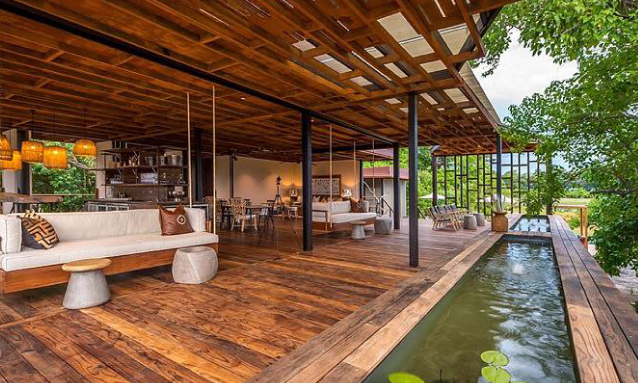
And though we as travelers today are more likely to define luxury as experience and immersion, it doesn’t hurt, either, that the Botswana model leans hard on high-end camps with all the bells and whistles you’d expect of a camp that can clock in at $2,300 a head, per night. It’s a jump from the $1,500 you can expect to pay at high-end lodges in South Africa or Zimbabwe, to be sure, but when you’re safe in your room at the end of the night after spying leopards, hippos, and hyenas on your walk between the main lodge and your tent—extremely rare in general, but very possible at a place like Mombo—you won’t be thinking about the money.
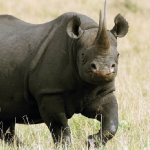 Travellers also like to know that their tourism dollars are directly invested into wildlife preservation, which is something not always clear with Africa—just look at the recent poaching allegations against South Africa’s ex-president Zuma. Poaching is rampant across the continent; rhino horn is worth more than its weight in gold and three each day get poached (though less valuable, ivory is still hot on the black market, and an elephant is captured and killed every 15 minutes).
Travellers also like to know that their tourism dollars are directly invested into wildlife preservation, which is something not always clear with Africa—just look at the recent poaching allegations against South Africa’s ex-president Zuma. Poaching is rampant across the continent; rhino horn is worth more than its weight in gold and three each day get poached (though less valuable, ivory is still hot on the black market, and an elephant is captured and killed every 15 minutes).
To put it in perspective: In 2001, Botswana had exactly zero black rhino left, which forced the government to get serious about passing legislature to combat and protect its wildlife. Since then, they’ve made poaching punishable by death, and are the only country in Africa to deploy the national military to make sure poachers stay out of the reserves (South Africa and Zambia still rely on private donation). Last year, Prince Harry lent the cause some dazzle when he became patron of Botswana’s Rhino Conservancy, and today, at least 200 rhino have been repopulated to the Okavango Delta due to private-public partnerships.
Botswana’s model is only a decade or so old, but the results have been so successful that Rwanda adapted a version of it last year with regards to its gorilla tourism and conservancy. Though it means you are almost guaranteed viewing that will surpass anything found elsewhere on the continent, maybe the most important part is that a traveler can feel good about where they, and their cash, is going.
Source: FYI from Conde Nast traveller, full article @ www.cntraveler.com
Image by Sajjad Fazel

